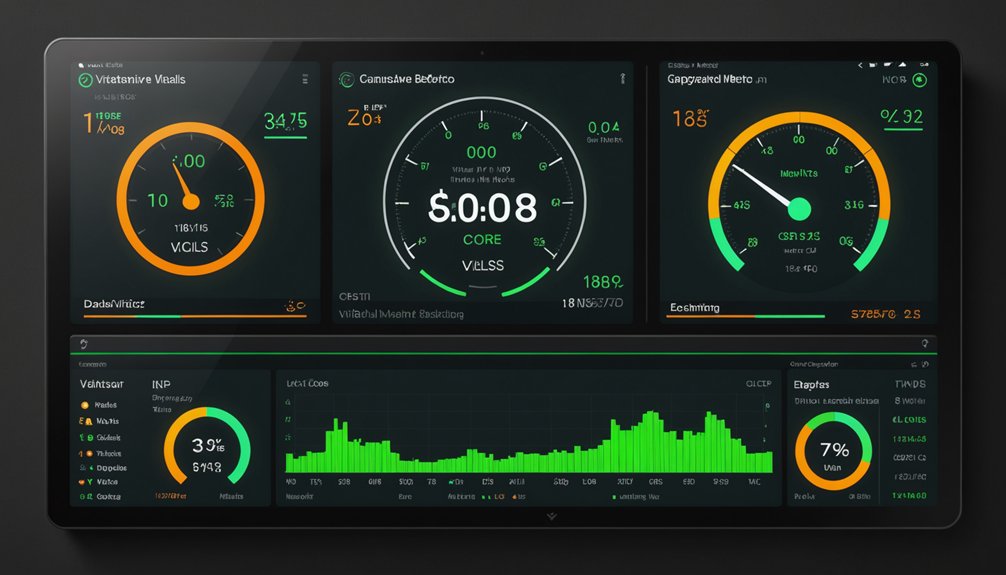Data wrangling transforms messy, raw data into usable formats. It’s not just cleaning—it’s a complete process: collection, discovery, structuring, cleaning, validation, and enrichment. Python dominates this space with Pandas and NumPy leading the charge. The process eats up to 80% of a data scientist’s time. Seriously. Tools range from simple Excel to cloud solutions for massive datasets. Without proper wrangling, your fancy algorithms are just processing garbage. The difference between guesswork and insights awaits below.

Raw data is a mess. It’s disorganized, inconsistent, and practically useless until someone whips it into shape. That someone could be you, armed with data wrangling skills.
Data wrangling, sometimes called data munging, transforms raw data into something actually usable for analysis. It’s not glamorous work, but it’s essential. Without it, your fancy algorithms are just garbage-processing machines. Garbage in, garbage out. Simple as that.
The process involves several key steps. First, collection – grabbing data from wherever it lives: databases, files, APIs, or scraping it from websites. Next comes discovery, where you figure out what you’re actually dealing with. Structuring follows, arranging that jumbled mess into organized formats. Then there’s cleaning – fixing errors, handling missing values, removing duplicates. After cleaning, the validation step ensures data consistency and quality before proceeding to analysis. Finally, enrichment adds value to what you’ve got. Each step matters.
People often confuse data wrangling with data cleaning. They’re not the same thing. Cleaning is just one part of the broader wrangling process. The terms get thrown around interchangeably, but they shouldn’t be. Know the difference. Exploratory data analysis is crucial for understanding your dataset thoroughly before any cleaning begins. Modern AI systems can enhance segmentation by analyzing behavioral patterns in real-time data streams.
Python dominates the data wrangling landscape thanks to libraries like Pandas and NumPy. Other tools include Excel, SQL databases, OpenRefine, and cloud services for bigger datasets. The right tool depends on your data’s size and complexity. Some problems need industrial-strength solutions.
The challenges are real. Data quality issues plague every project. Missing values. Duplicates. Formatting nightmares. Trying to merge data from different sources? Good luck with that. It’s time-consuming, tedious work. No wonder data scientists spend up to 80% of their time just wrangling data.
But the payoff is worth it. Clean, structured data leads to better decisions and fewer errors. It uncovers insights that drive business strategy. The process is inherently iterative and fluid, requiring you to circle back through steps as new issues emerge. In today’s data-driven world, proper data wrangling isn’t optional – it’s the difference between making informed decisions and just guessing. Deal with it.
Frequently Asked Questions
What Tools Are Best for Data Wrangling in 2025?
For data wrangling in 2025, several tools stand out.
Alteryx AI Platform offers powerful automation with analytics capabilities.
Talend handles complex data quality issues while maintaining community support.
Microsoft Power Query delivers seamless data handling for business analysts.
Matillion excels in cloud-based integration.
Datameer tackles complex datasets with advanced transformation features.
These tools aren’t created equal.
Some focus on AI integration, others on workflow management.
The best choice? Depends on your specific needs.
No one-size-fits-all here, folks.
How Does AI Impact Modern Data Wrangling Processes?
AI has revolutionized data wrangling. Period. It automates repetitive tasks that used to take hours—now done in seconds.
Pattern detection? AI’s got that covered, spotting trends humans might miss.
The tech learns from past decisions too, getting smarter with each dataset. Anomalies that once slipped through? Flagged instantly.
Tools like DataRobot and Apache Spark ML are changing the game, handling massive data volumes while maintaining quality.
Sure, ethical concerns exist, but the efficiency gains? Undeniable.
What Skills Should Data Wranglers Develop for Future Careers?
Future data wranglers need adaptability—it’s non-negotiable.
Programming skills in Python and familiarity with specialized tools like Pandas are baseline requirements now. Machine learning integration knowledge? Essential.
Data visualization abilities separate the professionals from the amateurs. Ethics and governance understanding isn’t optional anymore.
Real-time analytics capabilities are becoming standard. And let’s face it, continuous learning isn’t just important—it’s survival.
The field moves too fast for complacency. Certification helps, but practical application matters more.
How Do Organizations Measure ROI From Data Wrangling Investments?
Organizations track data wrangling ROI through multiple angles.
Financial impact? They compare costs against benefits from better decisions. Time savings matter too—faster data prep equals money saved. Some measure quality improvements: cleaner data, fewer errors, happier users.
The tricky part? Quantifying intangible benefits. How do you put a price tag on “better decisions”? Not easy.
Many use standard formulas: cost-benefit analysis, payback period, or straight-up ROI calculations.
Regular monitoring is critical. No measurement, no justification.
Can Data Wrangling Be Fully Automated With Current Technology?
Full automation of data wrangling? Not quite there yet.
Current technology can handle repetitive tasks and identify patterns, but complex datasets still need human judgment. The tools lack contextual understanding for nuanced transformations.
Sure, AI-driven solutions like DataRobot help, but they’re no magic bullet. Domain expertise remains essential for quality and integrity.
The future looks promising though—machine learning advances will keep pushing the boundaries. For now, it’s a human-machine partnership. Period.




